Utah Education Network
Uen: 1st Grade Act. 24: Interactive Writing
In this instructional activity, young scholars will listen to nonfiction books about items that sink and float. Students will participate in filling in words to fill in a teacher-created chart that is connected to the information. Young...
Read Works
Read Works: Explicit Information 1st Grade Unit
[Free Registration/Login Required] A two-lesson unit in which students learn how to identify explicit information in both fiction and non-fiction texts. The lessons utilize the books Frogs by Gail Gibbons and Stellaluna by Janell Cannon....
Annenberg Foundation
Annenberg Learner: Sequence
Listen to an explanation about the series of events in Cinderella. Then look at some pictures where the story's events are all mixed up and put them in the correct order.
Read Works
Read Works: Grade 2: Three Lesson Unit: Genre
[Free Registration/Login Required] A series of three lesson plans designed to teach students to compare and contrast fiction and non-fiction, identify the characteristics of non-fiction, and use guide words to locate topics in an...
Read Works
Read Works: Sequence Kindergarten Unit: Sequence Clue Words
[Free Registration/Login Required] Teach students to identify the sequence of a story by looking at transitional words such as "first" and "then" in the book Henry and Mudge: The First Book of Their Adventures by Cynthia Rylant. Learning...
Read Works
Read Works: Setting Kindergarten Unit: Where
[Free Registration/Login Required] Use the book Gaspard at the Seashore by Anne Gutman to teach clues students can use to determine where a story takes place. The book must be provided by the teacher, but downloadable worksheets for...
Read Works
Read Works: Sequence Kindergarten Unit: Order of Events
[Free Registration/Login Required] Students learn about putting events in order with a short text. Then they complete guided and independent sequencing activities with The Very Hungry Caterpillar by Eric Carle. Short texts and handouts...
Read Works
Read Works: Compare/contrast Kindergarten Unit: Similarities/differences in Text
[Free Registration/Login Required] A lesson using the book Long Ago and Today by Rozanne Lanczak Williamsin in which students learn to recognize similarities and differences within a text. Ideas for teaching, guided practice, and...
Other
Scribd.: Kindergarten Reading Comprehension Lesson Plan: Main Idea and Details
A five-day lesson plan to teach students how to find the main idea of a story and generate a title, identify facts and details from a story, and differentiate between main idea and supporting details.
Education Development Center
Tv411: Summarizing: Activity 3
In this activity, students choose the correct category to which details belong. Being able to categorize helps students to identify the difference between main ideas and details.
Read Works
Read Works: How to See Sound
[Free Registration/Login Required] An informational text showing how to see sound waves. A question sheet is available to help students build skills in reading comprehension.
Curated OER
Google for Education: Children and Technology: Collaborative Illustrated Story
Students collaboratively create an illustrated story as a team by using Google Presentation.
Learning Farm
Learning Farm: Ccs: Time, Sequence, and Cause/effect
An automated lesson will engage student's learning how to describe the connection between a series of historical events, scientific ideas or concepts, or steps in technical procedures in a text. An introduction to the concept precedes a...
Quizlet
Quizlet: Story Elements (1St Grade) Match
This interactive game of "Match" assesses students' knowledge of story element definitions. Students will match the correct definition of a story element to its corresponding definition. Picture cues are provided on this review resource.
Quizlet
Quizlet: Story Elements (1St Grade): Flashcards
These interactive flashcards provide definitions for different story elements. Engaging picture cues are provided for each flashcard, and students can play the audio to hear the words and definitions read aloud.
Better Lesson
Better Lesson: rl.k.3 With Prompting and Support, Identify Characters, Settings,
This landing page provides different lesson plan choices on teaching RL.K.3 With prompting and support, identify characters, settings,
Success Link
Success Link: Characters, Setting, Plot, Conclusion, and Summarizing a Story
This lesson plan offers a step-by-step procedure for teaching young scholars how to identify story elements and to summarize a story. It explains how to use a "Who Am I" activity, as well as a linkage activity in identifying characters...
Education.com
Education.com: ri.k.9 Lesson Plans
[Free Registration/Login Required] These lesson plans can help students practice identifying basic similarities in and differences between two texts on the same topic.
Read Works
Read Works: Paired Text Questions: "We Are Americans" and "Whoever You Are"
Students will compare information from the non-fiction book "We are Americans" and the book "Whoever You Are" to write or speak more knowledgeably about what large groups of people have in common.
Education.com
Education.com: sl.k.5 Lesson Plans
[Free Registration/Login Required] Choose from four quality lesson plans to help students practice the Common Core Standard of adding drawings or other visual displays to descriptions as desired to provide additional detail.
Florida Center for Reading Research
Florida Center for Reading Research: Monitor for Understanding: Sum Summary! [Pdf]
A lesson plan in which young scholars read a narrative or informational text and complete graphic organizers to help them write good summaries of the texts. Materials are included.
Florida Center for Reading Research
Florida Center for Reading Research: Text Analysis: Compare and Contrast [Pdf]
A lesson plan in which students use graphic organizers to compare and contrast topics within a text. Materials are included.
Florida Center for Reading Research
Florida Center for Reading Research: Expository Text Structure: Summarizing [Pdf]
A lesson plan in which students read a text and record the main ideas and supporting details on a graphic organizer. Students then complete the organizer by writing a summary of the text. Materials are included.
Florida Center for Reading Research
Florida Center for Reading Research: Narrative Text Structure: Retell Wheel
A lesson plan in which students read a narrative text and then turn a question wheel to answer questions about the characters, setting, conflict, and plot. Materials are included.[PDF]






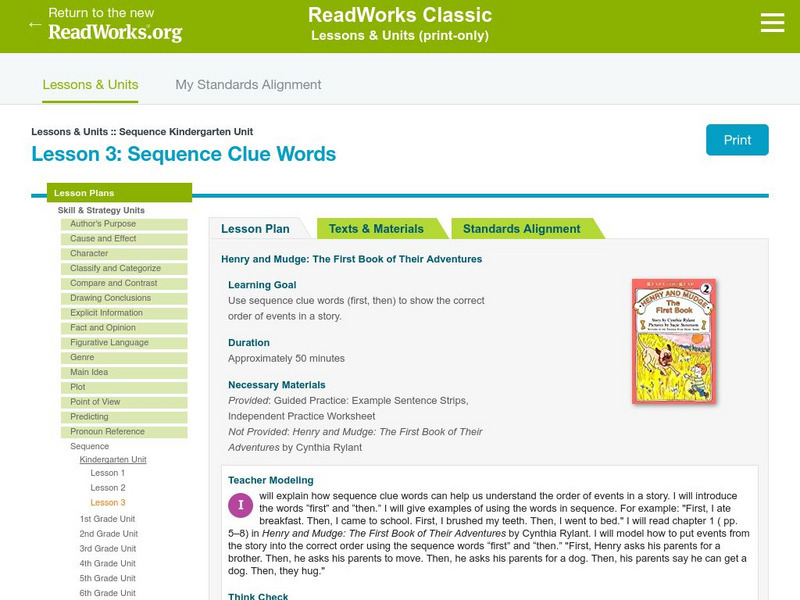
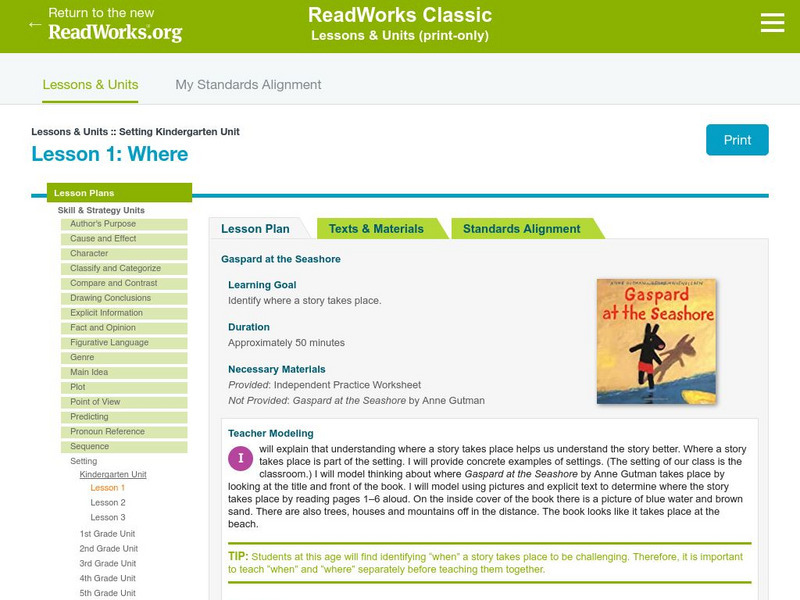




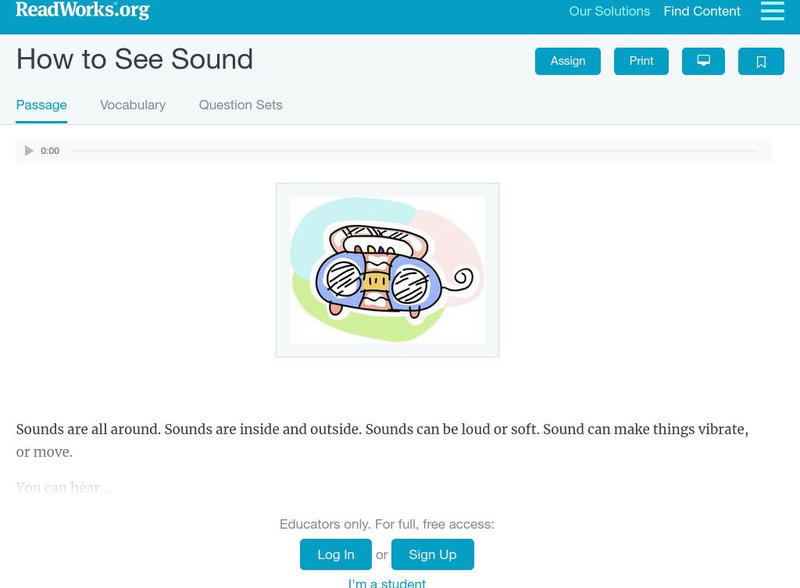



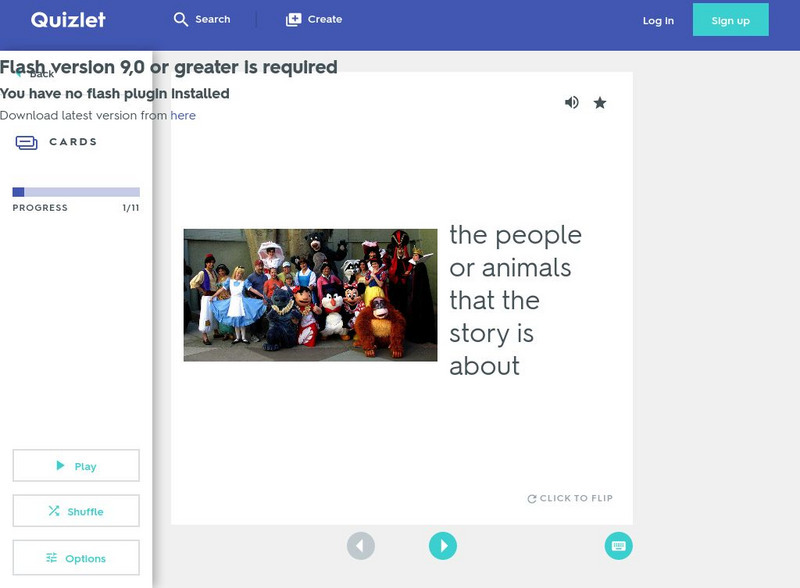


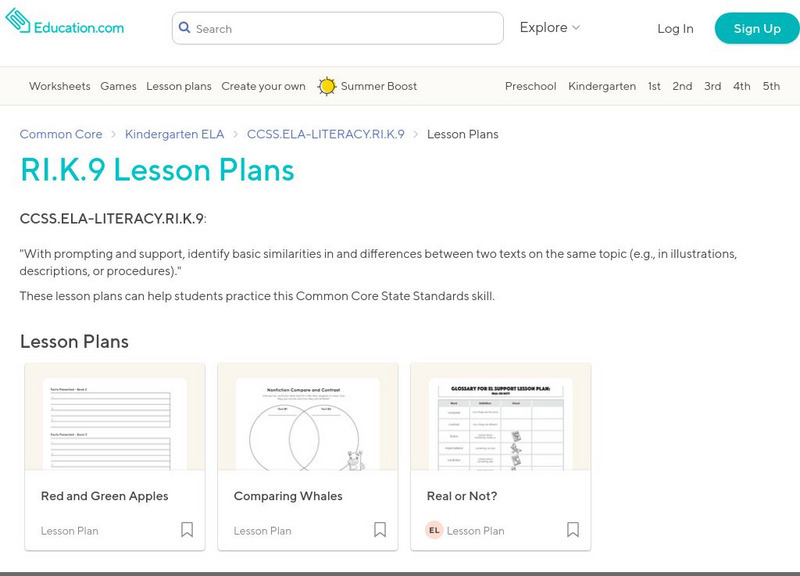


![Florida Center for Reading Research: Monitor for Understanding: Sum Summary! [Pdf] Lesson Plan Florida Center for Reading Research: Monitor for Understanding: Sum Summary! [Pdf] Lesson Plan](https://content.lessonplanet.com/knovation/original/509088-9fceb7ddd10dab1b4fb2d2cdfe6dce64.jpg?1661786991)
![Florida Center for Reading Research: Text Analysis: Compare and Contrast [Pdf] Lesson Plan Florida Center for Reading Research: Text Analysis: Compare and Contrast [Pdf] Lesson Plan](https://content.lessonplanet.com/knovation/original/509102-e19a3df2f7653b311f3d50461f4c3bc7.jpg?1661786971)
![Florida Center for Reading Research: Expository Text Structure: Summarizing [Pdf] Lesson Plan Florida Center for Reading Research: Expository Text Structure: Summarizing [Pdf] Lesson Plan](https://content.lessonplanet.com/knovation/original/509106-80e78b7399a2808435954652f1b4d966.jpg?1661786965)
